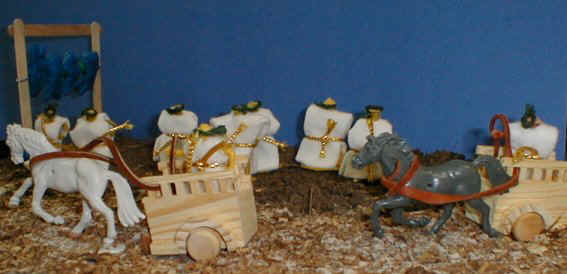

The chariot races were a popular form of entertainment. The races were run by groups called factions. The factions owned horse ranches and organized bets. The people attending the races bet on the factions not on the horses.
Professional charioteers were hired by the factions. Each faction was identified by the color tunic the charioteer wore: Greens, Blues, Reds, and Whites. One to three chariots ran for each faction. Each chariot was pulled by two to four horses.
At the Circus Maximus twelve starting boxes were available. The gates were opened simultaneously after the magistrate gave the signal. The drivers wrapped their reins around their bodies and took off. The reins were wrapped around the driver's waist so that he could lean back and whip the horses without falling. If the chariot crashed the driver had to use a hooked knife to cut the reins. During the race many wrecks occurred. Many were caused by tricks from opponents.
The chariots ran counter-clockwise around the track for seven laps. Each lap was marked with dolphins that were lowered as the laps were finished. The winner received palms and crowns as a prize. They usually received a good amount of money from the betting as well.
Try building a diorama of a chariot race. We used plastic figures covered with felt tunics, wooden chariots made from toy trucks, and dolphins we formed from clay.

